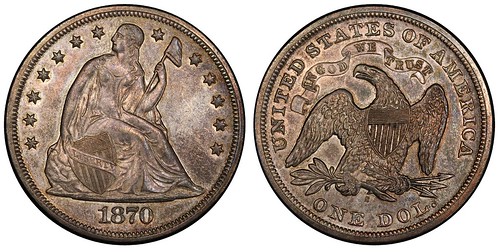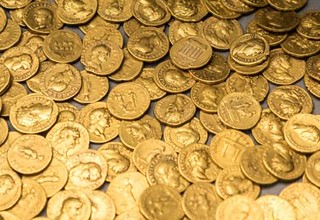
PREV ARTICLE
NEXT ARTICLE
FULL ISSUE
PREV FULL ISSUE
LOOSE CHANGE: JANUARY 8, 2023Here are some additional items in the media this week that may be of interest. -Editor A Coin Update article by Dave Bowers examines Augustus Heaton's classic monograph and the rise of mint mark collecting. -Editor From 1838 when the first branch mints opened, into the early 1890s, collecting coins was by date only. As hard as it may be to envision today, no one cared if a coin had a CC, S, or some other letter. Mint-marked issues that are considered great rarities today—the 1854-S $2.50 and $5 for example—were worth no more than a Philadelphia Mint coin, and an 1870-S Liberty Seated dollar had no extra value. That changed in 1893 when Augustus G. Heaton published his landmark monograph, A Treatise on the Coinage of United States Branch Mints, for sale for just a dollar.
In that decade Heaton was one of the best-known figures in American numismatics and was important in the young American Numismatic Association as an officer and president. He also contributed to The Numismatist, including a poem about 13
To read the complete article, see:
Arthur Shippee passed along this article on currency devaluation in the fourth and fifth centuries. Thank you. -Editor
The public excesses in the civil and military budgets, the incessant bribes and gifts, the repeated tax increases, the growth of the state bureaucracy, and the continuous requisitions of goods and precious metals had exhausted the Roman economy to incredible levels. To cap this disastrous reality, inflation had risen from 0.7 percent per year in the first and second centuries to 35.0 percent per year in the late third and early fourth centuries, impoverishing all social strata of the empire by leaps and bounds.
To read the complete article, see:
For bibliophiles, Michael Niebruegge passed along this article about book care and cleaning. Thanks. -Editor
1. Wipe down the whole book, cover to cover, being careful when you clean the book's pages.
2. If there are stubborn smudges and stains on the cover of the book, wet the paper towel or microfiber cloth with a little water and revisit those bits. Bear in the mind that books—particularly old books—can be fragile.
To read the complete article, see:
Wayne Homren, Editor The Numismatic Bibliomania Society is a non-profit organization promoting numismatic literature. See our web site at coinbooks.org. To submit items for publication in The E-Sylum, write to the Editor at this address: whomren@gmail.com To subscribe go to: https://my.binhost.com/lists/listinfo/esylum All Rights Reserved. NBS Home Page Contact the NBS webmaster 
|


